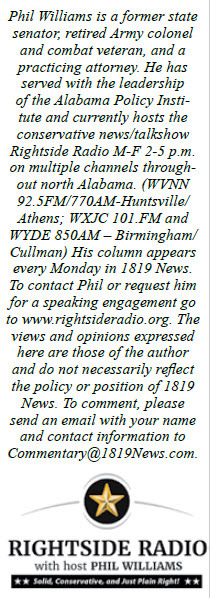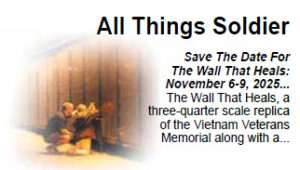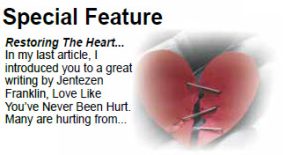 By: Phil Williams
By: Phil Williams
The fickle whims of culture should never be a measuring stick for what is right. Cultural fads have a way of shifting with societal winds which is not always a good thing. There was a time when targeting kids was considered fully out of bounds. Not so much these days.
Both of my grandfathers were smokers. It was the way of things in their era. My maternal grandfather smoked Raleighs — smooth tasting with rewards coupons that could be redeemed for a new fishing pole if you saved them up. My paternal grandfather smoked unfiltered Camels. They were rough, but don’t ask me how I know. It’s not like I ever snuck a smoke or two out back or anything silly like that.
Both brands marketed their wares to just the kind of men my grandfathers were. Raleigh cigarettes were endorsed by Babe Ruth and seemed to fit my Army general grandfather who served through three wars and helped develop the hydrogen bomb. Camels were a tough, no nonsense, working man’s smoke for my coal miner/steelworker grandfather.
Marketing is everything, and big tobacco was constantly trying to find ways to broaden appeal in a competitive market. Then along came a suave and debonair dude. A man that every guy wanted to be like. He had all the ladies, and drove the best cars. He was James Bond, the Marlboro Man and Audie Murphy all rolled into one. His name was simply “Joe Camel.”
Joe Camel was the branding mascot for Camel cigarettes made by R.J. Reynolds Tobacco Company (RJR). He burst onto the U.S. advertising scene in 1988 and immediately became one of the most recognized advertising images in modern history. But he fell afoul of society when the Journal of the American Medical Association conducted a study which found that Joe Camel was instantly recognizable by 91% of children, who also associated him with cigarettes. Old Joe’s image was on par with Mickey Mouse in its appeal. Another study concluded that Camel’s underage smokers had grown in number exponentially as a result of the Joe Camel campaign. In 1992, a San Francisco Attorney filed suit against RJR alleging Joe Camel was intentionally targeting minors, and that RJR profits from underage smokers had grown from $6 million to over $476 million in just 4 years. At the behest of Congressman Henry Waxman (D-CA) the Federal Trade Commission investigated and issued a finding that RJR had unreasonably and knowingly targeted minors. Then came the smoking gun. A 1974 RJR internal memo emerged with evidence that RJR was indeed targeting young smokers aged 14 and up. The memo spoke of a direct ad campaign for young smokers, saying that “These are the smokers of tomorrow.” The jig was up. In 1997, RJR retired Joe Camel.
Joe Camel had outraged the authorities. His likeable cartoonish face was deemed to be dangerous, and intentionally designed to cultivate a strong first and early impression for children, aka the smokers of tomorrow.
There’s no excusing RJR’s targeting of kids, but don’t you wish the worst thing upon us these days was a cartoon camel encouraging kids to smoke?
In my lifetime the powers that be saw fit to lead a charge against a major corporate entity because the corporation was believed to be enticing kids into an unhealthy lifestyle. Adults were literally grooming kids to be the next generation of smokers.
Yet now we have drag queens performing at so-called family-friendly events. We’re told that questioning this behavior is tantamount to domestic terrorism and somehow homophobic. Parents and concerned citizens are berated for daring to question, complain, or protest the idea of children being exposed to men cross-dressing in hypersexualized women’s clothing with exaggerated female characteristics. Men, who quite literally lampoon and objectify women while dancing provocatively and making lewd remarks. Opposing this distorted behavior is screeched as a gross affront to the rights of the gay community.
 It actually requires little effort to mentally assent that parents should always be wary of men who dress as women and cavort in front of children. There’s nothing normal or comfortable about any of it. The history of drag is a full buffet of madness. Yet they come, often by invitation, to schools, libraries, and community centers to host Drag Queen Story Hours.
It actually requires little effort to mentally assent that parents should always be wary of men who dress as women and cavort in front of children. There’s nothing normal or comfortable about any of it. The history of drag is a full buffet of madness. Yet they come, often by invitation, to schools, libraries, and community centers to host Drag Queen Story Hours.
Why the makeup if all they wish to do is read stories? Because it’s not really about reading and everyone knows it. This is about the clearly stated purpose of grooming the next generation. By cartooning women in front of children they are attempting to normalize abnormal and unhealthy behavior.
How do I know this? Because they say so themselves. It’s no secret. You can read it yourself on the organizational website of Drag Story Hour:
Storytellers using the art of drag to read books to kids in libraries, schools, and bookstores. DSH captures the imagination and play of the gender fluidity of childhood and gives kids glamorous, positive, and unabashedly queer role models.
In spaces like this, kids are able to see people who defy rigid gender restrictions and imagine a world where everyone can be their authentic selves!
A role model? Being a “role model” means to encourage others to emulate behavior. A role model sets the example for followers. In short, the leadership of Drag Story Hour admits that their sole purpose is to create the next generation of drag queens.
How is this any different than Joe Camel? Short answer: it’s not.
Have we as a nation gone so far down the path of depravity and indifference that we don’t see the irony in knowing that Joe Camel is considered bad for kids, but men dressed as women performing provocatively in front of children is not?
Joe Camel’s got nothin’ on these drag queens.
By: Phil Williams





